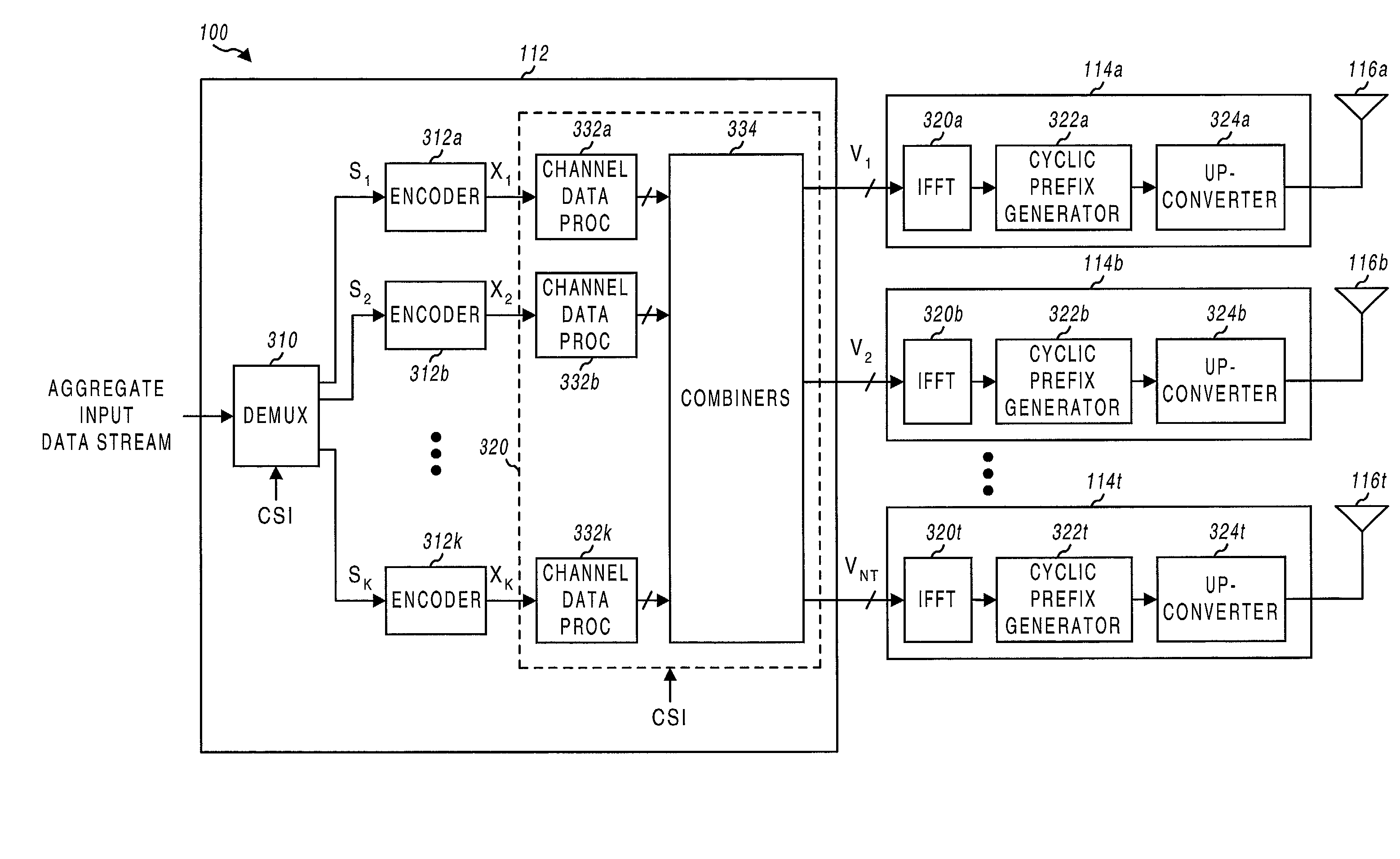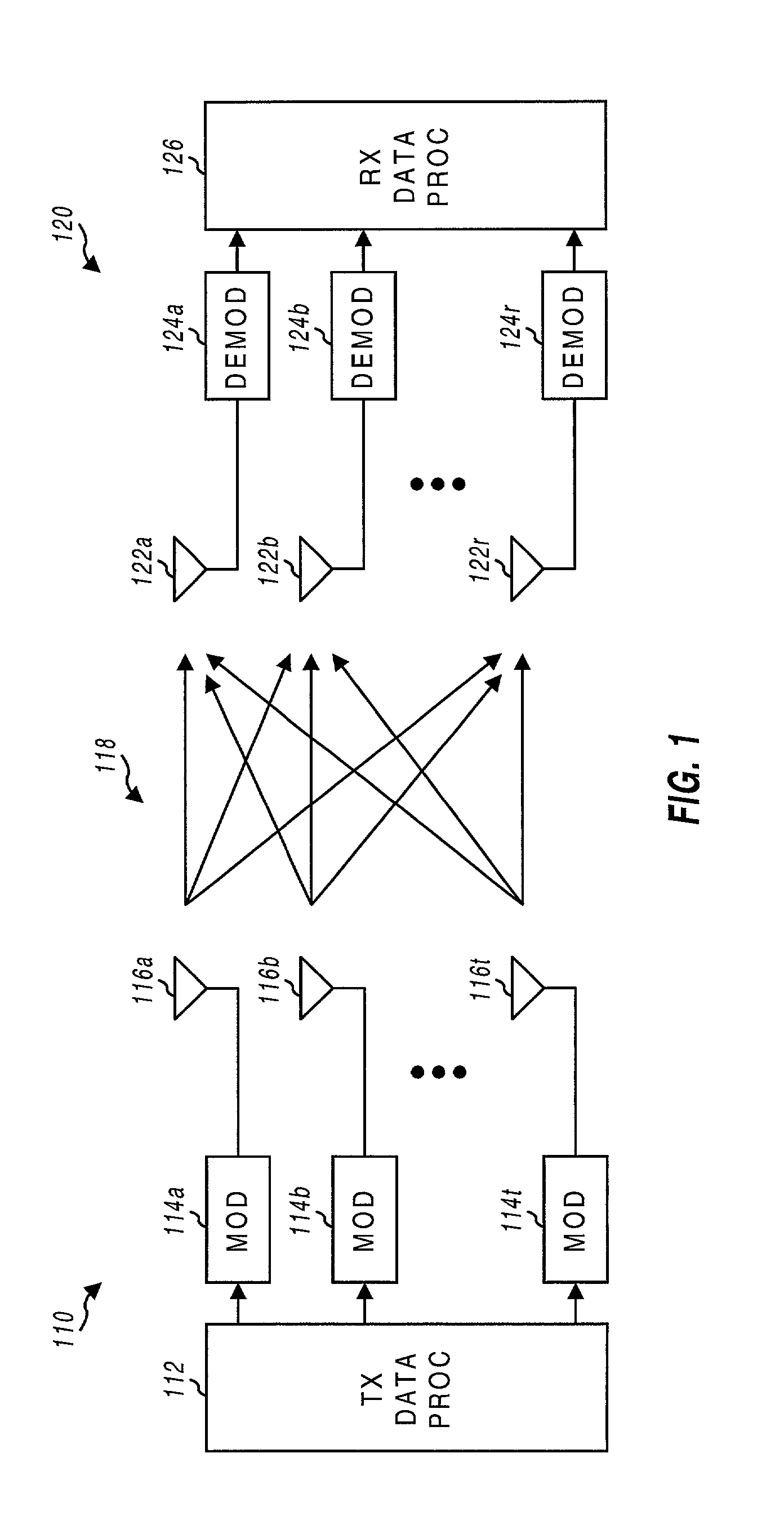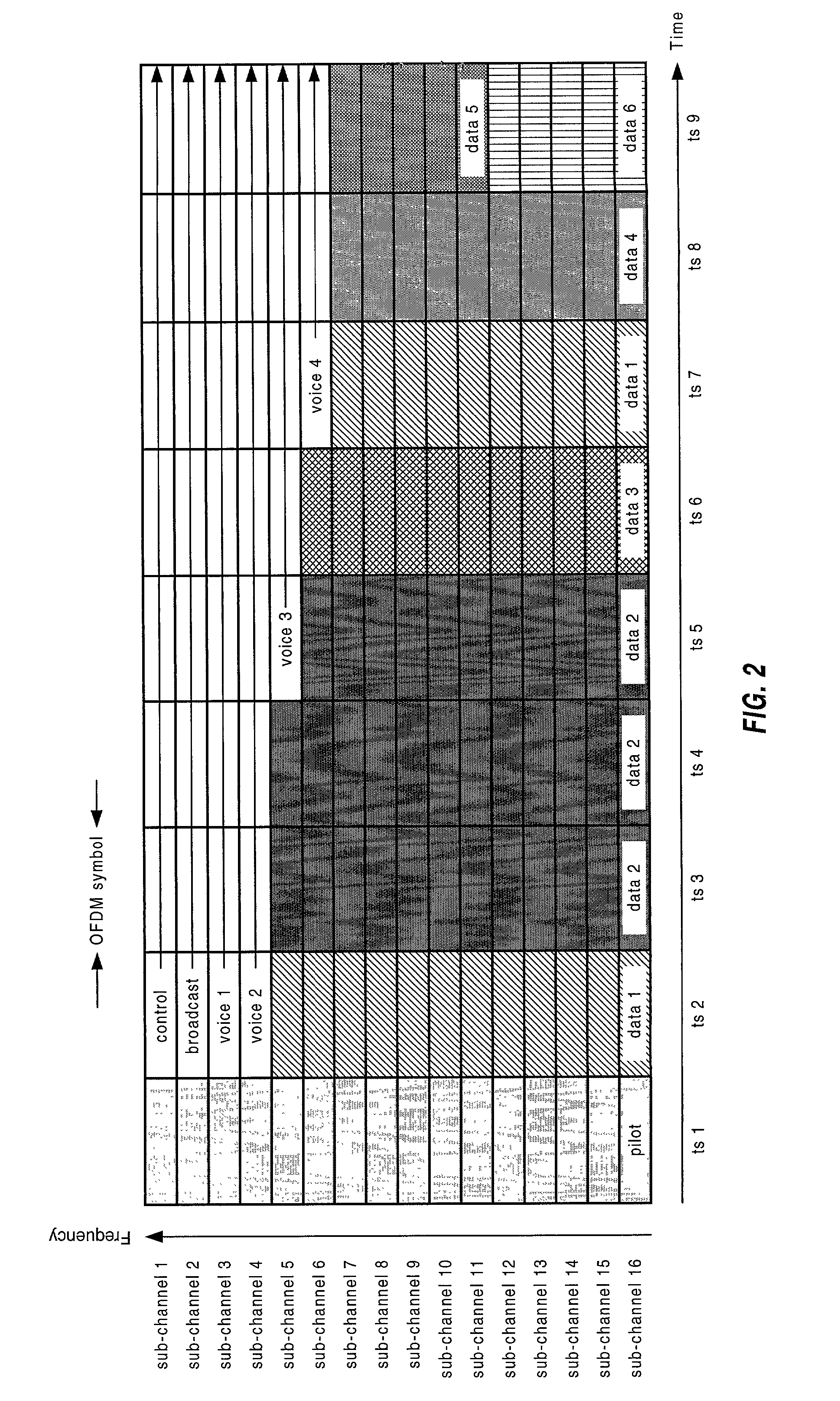High efficiency high performance communications system employing multi-carrier modulation
a high-efficiency, multi-carrier technology, applied in the field of data communication, can solve the problems of stringent and fixed delay requirements, and the voice frame may be limited to the use of less efficient coding techniques having shorter delays, so as to reduce interference to other users, increase diversity, and minimize interference
- Summary
- Abstract
- Description
- Claims
- Application Information
AI Technical Summary
Benefits of technology
Problems solved by technology
Method used
Image
Examples
Embodiment Construction
[0031] FIG. 1 is a diagram of a multiple-input multiple-output (MIMO) communications system 100 capable of implementing some embodiments of the invention. Communications system 100 can be operative to provide a combination of antenna, frequency, and temporal diversity to increase spectral efficiency, improve performance, and enhance flexibility. Increased spectral efficiency is characterized by the ability to transmit more bits per second per Hertz (bps / Hz) when and where possible to better utilize the available system bandwidth. Techniques to obtain higher spectral efficiency are described in further detail below. Improved performance may be quantified, for example, by a lower bit-error-rate (BER) or frame-error-rate (FER) for a given link carrier-to-noise-interfe-rence ratio (C / I). And enhanced flexibility is characterized by the ability to accommodate multiple users having different and typically disparate requirements. These goals may be achieved, in part, by employing multi-car...
PUM
 Login to View More
Login to View More Abstract
Description
Claims
Application Information
 Login to View More
Login to View More - R&D
- Intellectual Property
- Life Sciences
- Materials
- Tech Scout
- Unparalleled Data Quality
- Higher Quality Content
- 60% Fewer Hallucinations
Browse by: Latest US Patents, China's latest patents, Technical Efficacy Thesaurus, Application Domain, Technology Topic, Popular Technical Reports.
© 2025 PatSnap. All rights reserved.Legal|Privacy policy|Modern Slavery Act Transparency Statement|Sitemap|About US| Contact US: help@patsnap.com



